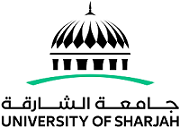Diagnostic Screening for Microdeletion Frequency in the AZF-region of Y Chromosome and Chromosomal Abnormalities among Emirati Infertile Male Patients :10 Years Retrospective Study /
Linked Agent
Mahasneh, Ihsan Ali, Thesis advisor
Alternative Title
المسح التشخيصي لتكرار الحذوفات الدقيقة في العنقود الجيني AZF على الكروموسوم واي والاعتلالات الكروموسومية لدى مرض الخصوبة الذكورية من الإماراتيين : دراسة رجعية لعشرة سنوات
Date Issued
2023
Language
English
Thesis Type
Thesis
Abstract
Human Y-chromosome harbors a unique gene cluster AZFa, AZFb, AZFc and AZFd needed for spermatogenesis and production of male gametes as requirement for human reproduction. Any partial or complete deletion will lead to male-infertility which is global health problem. In comparison with other parts of the world, microdeletions on these genes have not been investigated in Emirati infertile-males. In this study, which is the first study on this respect, we conducted AZF-microdeletions diagnostic screening using 20 STS-markers for 18 Emirati infertile males recruited from Dubai Fertility Center and University Hospital of Sharjah. Furthermore, we conducted 10-years retrospective cross-sectional study using recorded clinical data of 312 infertile males attending DFC between January 2011-2021. We identified the type and prevalence of chromosomal, clinical and hormonal abnormalities among Emirati infertile males. Three cases of complete AZFc deletion were detected with frequency of 2.2% among 136 azoospermic Emiratis. The absence of SY254 (380 bp) and SY255 (124 bp) were observed which removed DAZ clusters. The prevalence of chromosomal abnormalities was 13.9% and 8% among azoospermic Emiratis and total Emirati infertile-males respectively. The frequency of numerical chromosomal abnormalities ranged from 0.4% to 4% whereas the frequency of structural chromosomal abnormalities ranged from 0.4% to 1.2%. About 59.0% of the Emirati infertile males had azoospermia whereas 28.46% were diagnosed with other conditions as severe-oligoasthenoteratozoospermia (7.63%), severe oligoasthenospermia (5.22%), severe-oligozoospermia (4.41%), oligoasthenoteratozoospermia (3.6%), asthenozoospermia (2.4%), oligoasthenospermia (1.6%), oligozoospermia (2%), teratozoospermia (0.8%), asthenoteratozoospermia (0.4%) and aspermia (0.4%). The results on hormonal abnormalities for the testosterone, Luteinizing hormone, Follicle-stimulating and inhibinB among Emirati infertile males are given in addition to description for differ
Note
A Thesis Submitted in Partial Fulfilment of the Requirements for the degree of Master of Sciences in Biotechnology University of Sharjah Sharjah, UAE Date: November 2022
Member of
Category
Theses
Library of Congress Classification
WJ709 EB16d 2022
Local Identifier
b15867572

